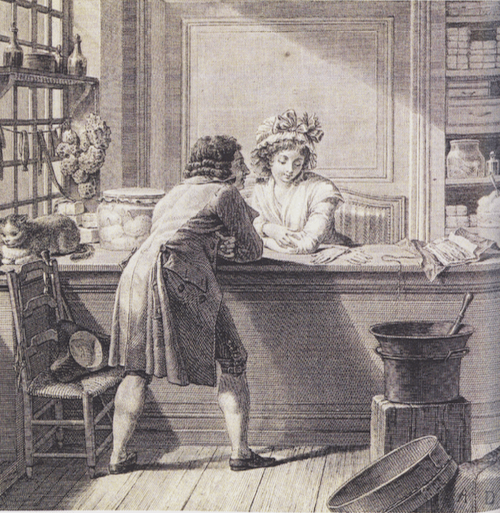Fargeon
the perfumer to Marie Antoinette and inventor of modern cosmetics.
Jean-Louis Fargeon was born into the Age of Enlightenment in 1748 in Montpellier, the capital of French perfumery, where he acquired the craft of creating perfumes. It was in Paris that he made it an art form.
A descendent from a long line of master apothecaries, he stood out for his refined tastes and his addiction to the natural fragrances of flowers.
True to tradition, he practiced the art of making gloves, dyeing them and perfuming them.
Located in the Roule district, his boutique became the temple of the elegant.
His focus turned to Versailles. His ambition was great and he became the personal perfumer of the Queen. The latter, seduced by his perfumed gloves, entrusted him with creating her perfume.
She inspired him with many types of perfumes: “pigeon cosmetic” water which cleansed the skin; “charmed” water which tones; sachets for the bath called “Modesty Bath” for those who hated the name.
He viewed his work as art and mixed the fragrance of Trianon as if it were a piece of music.
At a time when make-up was a sign of social status and hid emotion, his mix of make-up was inspired by nature with its scents and treatments being at the origin of modern cosmetics.
He diversified his activities and made considerable inroads with the overseas market (England, the United States).
With the Revolution of 1789, pomp was no longer tolerated, but Fargeon continued to supply the Queen, even when she was imprisoned in the Tuileries. In 1801, he published his famous treatise "The Art of the Perfumer" in which he praised his profession.
Fargeon died in 1806. He was the most famous perfumer of the century.
The renaissance of Maison Fargeon celebrates the history of perfume, the embodiment of Master Perfumers and Glove-makers of the 18th century of which the Fargeon family was the most illustrious, but also that of the modern perfumery from which it originated.


